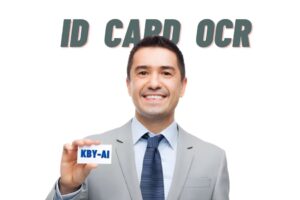Passport Reading Software is a digital tool that scans and processes passport information. SDK, or Software Development Kit, enables integration with other applications.
Passport reading software streamlines the authentication and data extraction of passport details, optimizing efficiency in travel and security sectors. The compatible SDKs provide developers the tools to embed these reading capabilities within broader systems, enhancing functionality. They typically include APIs and code libraries that simplify the incorporation of passport scanning and analysis into custom applications.
These passport reading softwares are vital for airports, border control, and businesses requiring reliable verification of identity documents. With precise algorithms, they quickly identify and digitize personal data, supporting smooth operations and improving customer experience. Investing in such technology ensures compliance with international standards and fosters an environment of enhanced security measures.
Evolution Of Passport Reading Software Technology

Early Manual Entry
Initially, passport reading software was a tedious manual process. Authorities would compare passport details with travellers information by hand. This was slow and error-prone. Key benefits and drawbacks of this era included:- High error rates due to human oversight.
- Long queues at immigration counters.
- Personal touch in scrutinizing documents.
Introduction Of Optical Character Recognition
Optical Character Recognition (OCR) revolutionized passport reading software. This technology scans, reads, and verifies passport data automatically. The transition to OCR brought significant changes:- Faster processing of travel documents.
- Reduction in human errors.
- Effortless data retrieval and storage.
Essentials Of Passport Reading Software
Components Of Reading Software
Let’s dive into what makes this technology robust:- OCR Engine: Deciphers text from scanned images.
- Image Capture: High-quality scans through optimized hardware support.
- Data Validation: Cross-checks information with international standards.
- User Interface: Simple, guiding users through each step.
- Security Features: Protects sensitive data with advanced encryption.
Functionality Checklist
When considering passport reading software, confirm the following functionalities:- Speed: Quick reading and processing times.
- Accuracy: Minimal errors in text recognition.
- Compatibility: Works with different devices and systems.
- Supports Multiple Formats: Reads various document types.
- Easy Integration: SDK easily fits into existing frameworks.
Understanding Software Development Kits (SDK’s)
Purpose Of Sdks In Passport Reading
The primary use of SDKs in the realm of passport reading is to simplify the integration of passport scanning and data extraction capabilities into various platforms. This enables applications to accurately read and process the information embedded in the machine-readable zone (MRZ) of passports.- Streamlining development: SDKs streamline the incorporation of complex passport reading functionalities into applications.
- Ensuring compliance: They ensure that the passport reading process adheres to international standards and regulations.
- Enhancing user experience: By simplifying the development process, SDKs help provide a seamless user experience for passport verification tasks.
Common Features In Passport SDK’s
When selecting a passport reading software SDK, it’s important to consider the features it offers. These features generally include:| Feature | Description |
|---|---|
| MRZ Recognition | Automatic detection and extraction of MRZ data. |
| Data Validation | Verification of the extracted data against predefined standards. |
| Image Capture | Facility to capture high-quality images of passport pages. |
| Multi-platform Support | Compatibility with various operating systems and devices. |
| Customizability | Options to tailor the SDK functions to meet specific requirements. |
Working Principles Behind Passport Scanners
Image Capture Techniques
First, these devices capture an image of your passport.- Flatbed Scanners: Like a photocopier, they take a picture of your passport page.
- Camera-based Scanners: They snap a photo in a flash.
- Swipe Scanners: You swipe, they scan. Simple as that.
Data Extraction Processes
After the snap, the magic happens.- OCR Tech: The software reads text like a pro.
- RFID Readers: They grab info from chips inside passports.
- Barcode Decoders: Can’t forget the barcode, scanners read those too.
Data Security & Encryption In Passport Reading Software
In the digitized world where personal identity is king, data security and encryption in passport reading software become pivotal. Passport Reading Software and SDKs (Software Development Kits) are no exception. They handle sensitive information daily, mandating robust security measures. Let’s explore how passport reading software technology ensures the safety of personal data.
Protecting Personal Information
Privacy is critical when scanning and storing passport data. Passport Reading Software comes equipped with advanced security protocols. These protocols turn personal information into complex codes. Only authorized systems can decode these. This ensures that thieves can’t misuse personal details from passports.
- Encryption at Rest and In-Transit: All data is encrypted not only when stored but also when sent to other systems.
- Strong Access Control: Limits who can view or use the data.
- Regular Updates & Patches: Keeps up with the latest security threats.
Compliance With International Standards
The software aligns with global regulations for data protection. Noteworthy amongst these are the General Data Protection Regulation (GDPR) in Europe and the Data Protection Act in the UK.
| Standard | Description | Impact |
|---|---|---|
| GDPR | Protects EU citizens’ data | Enhances privacy rights |
| ISO/IEC 27001 | Information security standards | Improves risk management |
Passport Reading Software and SDKs undergo strict audits to secure this compliance. They employ robust encryption algorithms to meet these standards. Each update further refines data protection methods.
- Audit trails to track data access
- Certifications prove adherence to laws and regulations
- Continuous improvements reflect the evolving nature of data security
The integration of strict data security and adherence to international standards play a key role in preserving the integrity of the passport reading process, offering users peace of mind when their sensitive data is in transit or stored within systems empowered by these technologies.

Machine Readable Zone (MRZ) Decoded
Understanding The MRZ Format
Passports and identity documents contain a special area known as the MRZ. This is a coded space at the document’s bottom. It holds important info in a way machines can read quickly. Regularly, you will find two or three lines in the MRZ. Each line is 30 to 44 characters long. These include letters, numbers, and chevrons (<<<) used as fillers. The MRZ follows international standards, making it uniform across most countries.
| Type | Characters per line | Number of lines |
|---|---|---|
| Passport | 44 | 2 |
| ID card | 30 | 3 |
- Name
- Passport number
- Nationality
- Date of birth
- Surname
- Expiration date
Accuracy In MRZ Scanning
Clear and error-free scanning is vital. It ensures quick and secure identity verification. A good passport reading system uses advanced recognition technology to reduce mistakes. It takes into account:- Variations in document layouts
- Different fonts and print qualities
- Physical damages to the MRZ
Integrating SDK’s With Existing Systems
Compatibility Considerations
When adding SDKs, the first step is to check compatibility. Systems must communicate without issues. Here’s what to ponder:- System requirements: Confirm the SDK suits your platform’s specifications.
- OS compatibility: Make sure SDK works well with your operating system.
- Language support: Check if the SDK supports your programming language.
- Dependencies: Identify any extra components the SDK needs.
Customization Capabilities
SDKs ought to fit like a glove. Flexibility is crucial. Look at these factors:- Interface adjustments: Tailor SDK interfaces to match your brand.
- Feature toggles: Turn on needed features, switch off the rest.
- Scalable performance: Ensure the SDK grows with your business needs.
- Code access: Some SDKs offer code you can tweak for a better fit.
Enhancing Readability With Image Processing
Improvement Algorithms
Image refinement is critical in transforming grim, unclear passport photos into clear, readable images. Passport reading software encompasses advanced algorithms designed to improve image quality. These include:- Contrast adjustment to make text stand out.
- Sharpening filters to enhance edge definition.
- De-skewing that corrects tilted images.
- De-noising to remove image artifacts.
Dealing With Damaged Passports
Passports can incur damage over time or through mishandling. Image processing is a savior for such scenarios. Below are steps the SDK takes to handle such passports:- Automated detection of creases and tears.
- Patch-up algorithms to repair tears digitally.
- Color restoration to revive faded text and images.
- Pattern recognition to realign distorted data.
Biometric Data Capture Dynamics
Facial Recognition Technology
Passport Reading Software adopts Facial Recognition Technology to verify identities. This tech analyzes facial features. It compares them with stored data for a match. This method is fast and hands-free. It boosts security without sacrificing convenience. Developers using SDKs can integrate this tech into various applications. It offers a touchless, accurate, and secure method of identifying individuals.Fingerprint Scanning Integration
Another key component is Fingerprint Scanning Integration. Fingerprint scanning is a popular choice for security. Passports and smart devices use it widely. The SDKs available streamline the integration of fingerprint scanning into applications. With just a simple touch, users can be verified. It reduces fraud risks while enhancing user experience. The technology is robust, and the SDKs make implementation into existing systems seamless.
Cross-platform Support For Passport SDK’s
Mobile And Desktop Solutions
The Passport Reading Software and SDK cater to both mobile and desktop environments. It’s designed to integrate seamlessly with:- iOS and Android for smartphones and tablets
- Windows, Mac OS, and Linux for desktop applications
Web-based Application Compatibility
A seamless web integration means the Passport SDK isn’t restricted to installed applications. It flourishes in:- Browser environments, with compatibility across Chrome, Firefox, Edge, and Safari
- Online services, providing users with the convenience of remote verification
Case Studies: Success Stories Of Passport Reading Software
Impact On Border Control Efficiency
Passport scanners have transformed border control operations. With the integration of advanced passport reading software, the processing time per traveler has significantly reduced. This software quickly extracts data from passports. Let’s look at a case study from an international airport in Asia:- Before: Manual data entry, long queues, increased wait times.
- After: Automated data capture, shorter queues, happy travelers.
Improvements In Airline Check-in Procedures
Airports strive for streamlined check-ins, and passport reading tech plays a pivotal role. One European airline implemented passport reading SDKs across its self-service kiosks. The results:| Aspect | Before SDK Integration | After SDK Integration |
|---|---|---|
| Check-in Time | 8 minutes | 3 minutes |
| Error Rate | 2.5% | 0.5% |
| Customer Satisfaction | 85% | 94% |
Advanced Reading: Rfid And Chip Authentication
Electronic Passport Components
An electronic passport, or e-Passport, is a traditional passport with a tiny chip. The chip stores the same data visually displayed on the passport’s data page. This includes the holder’s name, date of birth, and other biographical information. RFID (Radio-Frequency Identification) technology powers the chip. It allows wireless use of electromagnetic fields to transfer data. With RFID, customs officers can scan and retrieve information without physical contact.- Antenna: Connects to the RFID chip to receive and send information.
- IC Chip: Stores secure biometric data.
- Biometric Processor: For facial recognition, fingerprints, and iris scanning.
Secure Access To E-passport Data
Secure access to e-Passports is a top priority. Chip authentication plays a vital role. It prevents unauthorized reading. Before access to the chip’s data, the passport must be physically opened. This ensures that only authorized personnel can read the sensitive information.| Security Feature | Function |
|---|---|
| Basic Access Control (BAC) | Protects communication between the chip and reader. |
| Passive Authentication (PA) | Verifies that the data stored has not been altered. |
| Active Authentication (AA) | Confirms the chip’s legitimacy to curb cloning. |
User Experience And Interface Design In Passport Reading Apps
Designing For Speed And Efficiency
An effectively designed passport app understands the value of a user’s time. From opening the app to getting results, every step must be swift. Clear visual cues and responsive touch controls are non-negotiable for good design. A well-planned layout ensures that all necessary functions are easily accessible, leading to an enjoyable user experience:- Streamlined Process: Minimal steps for task completion.
- Fast Load Times: Optimized code for quick launches and operations.
- Smart Defaults: Anticipated data input for faster user interaction.
Error Handling And User Guidance
No app is flawless, and users may encounter errors. Efficient passport reading apps should not just identify these errors but also offer solutions. Intelligent error handling combined with proactive user guidance ensures user satisfaction. Below are principles integrated into the interface design:- Precise Error Messages: Immediately inform users of the issue.
- Clear Instructions: Provide simple steps to resolve errors.
- Support Access: Easy access to customer support if needed.
Software Maintenance And Updates
Keeping Up With Passport Feature Changes
Passport Reading Software evolves quickly. New features enhance user experience. Users expect advanced functionality. Keeping the software updated is essential.- Better user interface
- Enhanced security protocols
- Improved reading capabilities
Regular Software Patching
Regular patching fixes bugs and vulnerabilities. It’s a key part of software health. A patched system reduces risks. Both the software and SDK require attention. After all, safety is a priority. Here’s what patching does:| Benefits | Description |
|---|---|
| Security | Protects against threats |
| Stability | Prevents crashes and errors |
| Performance | Ensures fast processing |
Regulatory And Legal Considerations
Navigating the intricate landscape of legalities is vital for passport reading software and SDK developers to ensure compliance. Adherence to global regulations regarding data privacy and protection is paramount, as this technology handles sensitive personal information.
Data Protection Laws
Data protection laws ensure individuals’ privacy and safeguard their personal information. Passport reading solutions must adhere to these laws to avoid legal pitfalls. Key laws include:- General Data Protection Regulation (GDPR) – It governs data protection in the European Union.
- California Consumer Privacy Act (CCPA) – Allows California residents control over their personal data.
- Data Protection Act (DPA) – The UK’s law post-Brexit, aligning closely with GDPR.
International Travel Regulations
Passport reading technology plays a pivotal role in complying with international travel regulations. Airlines, immigration authorities, and travel agencies use this tech to fulfill legal obligations. Noteworthy points include:- Adherence to International Civil Aviation Organization (ICAO) standards for machine-readable travel documents.
- Implementation of Advance Passenger Information Systems (APIS) for secure data transmission.
- Integration with Interpol’s Stolen and Lost Travel Documents (SLTD) database for real-time checks.
The Future Of Passport Reading Software Technology
Potential Technological Advancements
Imagine the days ahead in passport reading tech:- Speed matters. Upcoming SDKs will scan passports in seconds.
- AI boosts accuracy. Neural networks learn from each scan, reducing errors.
- Biometrics take the front seat. Fingerprint scanners and facial recognition become the norm.
- Mobile integration evolves. Passport reading on smartphones becomes more seamless.
- Enhanced encryption guards personal data against cyber threats.
Predicted Changes In International Travel
Advancements in passport reading invite changes:- Security checkpoints get a facelift. Get ready for quicker queues at airports.
- New tech simplifies travel. Automatic checks allow smoother entry and exit.
- Travel apps incorporate passport SDKs. One-tap details update on your device.
- Advance data processing. Pre-screening starts before you reach the airport.
- Real-time updates. Expect instant security updates, visas, and travel advisories.
Frequently Asked Questions For Passport Reading Software And SDK
What Software Is Used To Scan Passports?
Passport scanners often use Optical Character Recognition (OCR) software to read and verify passport data. Common programs include 3M’s AT9000, Gemalto’s Document Reader, and Access IS OCR Passport Reader.
What Is Passport Reader Technology?
Passport reader technology digitally extracts information from passports. It uses OCR (Optical Character Recognition) to capture data for security checks and traveler identification.
Can Id Scanners Scan Passports?
Yes, many modern ID scanners can scan passports by reading the machine-readable zone (MRZ) or the RFID chip embedded within.
How Does A Passport Scanner Work?
A passport scanner reads the biometric page using optical character recognition (OCR). It captures an image of the page, extracting personal data and the photo for identity verification and checks against security databases.
What Is Passport Reading Software?
Passport reading software electronically scans and extracts information from passports for verification and authentication purposes.
How Does A Passport SDK Work?
A passport SDK (Software Development Kit) provides developers with tools and libraries to integrate passport reading functionality into applications.
Can Passport Reading Software Detect Fraud?
Yes, quality passport reading software can detect fraudulent documents by checking security features and data inconsistency.
What Formats Do Passport Readers Support?
Passport readers typically support ICAO-compliant MRZ (Machine Readable Zone) formats, among other travel document standards.
Is Passport Reader Software Customizable?
Many passport reader software solutions offer customization options to cater to specific business needs and compliance requirements.
What Industries Use Passport Scanning Software?
Passport scanning software is used across various industries including travel, banking, hospitality, and border control.
Conclusion
Navigating the digital landscape requires robust solutions for secure identification. Passport reading software and SDKs stand as vital tools in this quest. They streamline processes, enhance security, and ensure quick, reliable data extraction. Choose the right technology to empower your system with efficient identity verification.
Trust in tailored SDKs to keep your operations at the forefront of innovation and security.


